Support Village Voice News With a Donation of Your Choice.
By Dr. David Hinds
This Black Cultural Resistance Movement which is sometimes referred to as a Folk Religion or a Religious-Political Movement, first emerged in Jamaica in 1930. Its birth was triggered by the coronation of the Ethiopian Emperor, Haile Selassie and coincided with the beginning of a mass political uprising against colonial rule in the Anglophone Caribbean. In what came to be known as the “1930s Riots,” the people, led by workers, launched a blistering assault on colonial rule in the form of strikes, demonstrations and other forms of public protest. Rastafarianism challenged the very cultural foundations of the white supremacy that informed slavery and colonialism. It sought to reconnect Afro -Jamaicans to their ancestral roots by centering Africa and African Glory in their rhetoric and practice. It questioned the white bias of Christianity and in the process blackened the biblical narratives. In the final analysis, Rastafarianism is engaged in a project of Black Cultural Recovery and Black Empowerment.
Marcus Garvey
Rastafarians drew a lot from the teachings of Marcus Garvey, who they recognized as their primary prophet. They adhered to Garvey’s philosophy of Black Self Love or Pride, Black Self-Reliance, Pan Africanism, and Back to Africa. Garvey, a Jamaican born in 1887, who built the largest Black mass political movement in the USA, had become a threat to the racist segregated social order in there. He had come to the USA to meet the legendary African American leader, Booker. T. Washington, but by the time he arrived, Washington had died. However, he stayed in the USA and soon became immersed in the African American Freedom Struggle.
In 1914 he founded the United Negro Improvement Association (UNIA), which was headquartered in Harlem, New York. Garvey built up a huge following throughout the Black World; the UNIA estimated that by 1920 it had a membership of approximately four million. Not only did Garvey preach Black Uplift, but his organization initiated economic projects such as the Black Star Line and the Negro Factories Corporation. The former was comprised a fleet of ships which engaged in the trading of goods between the USA, Africa and the Caribbean. Under the Negro Factories Corporation, the UNIA operated enterprises such as restaurants, a laundry, grocery stores and a publishing house. The major publication was the Negro World, which was widely circulated and became an important medium for writers associated with the Harlem Renaissance.
Garvey’s message inspired Blacks throughout the world to see themselves in a more positive light. But it also triggered a backlash from American officialdom and sections of the Black American elite that led to Garvey’s imprisonment on trumped up charges. He was eventually released and deported to Jamaica. But the Jamaican elites also saw him as dangerous and did everything in their power to ostracize him. He left Jamaica for England where he spent his last years and died in 1940.
Repression
Rastafarians worship Haile Selassie, the Emperor of Ethiopia 1930-1974 as their God. Garvey had written and a play in which he predicted that an African king would arise to lead the people to the promise land. So, when the emperor was coronated in 1930, a group of people in Jamaica saw that as the fulfillment of Garvey’s prophesy. Led by Leonard Howell, the group bought lands in rural Jamaica and set up a commune. It is estimated that there were approximately 1800-2000 members who resided there.
By the 1950s Howell was imprisoned and the group, which had grown beyond the commune, faced persecution by the colonial government of the day. Identified by their trademark dreadlocks, which they had adopted from the Kenyan fighters in the famous Mau Rebellion and by their use of Ganga, they became a threat to the Jamaican status-quo. Matters reached boiling point in 1960 when a Rastafarian leader, Rev Claudius Henry and fifteen of his followers, were arrested, charged and convicted of treason. Henry was accused of advocating the overthrow of the government and soliciting the help of the Cuban revolutionary leader, Fidel Castro, in his quest. This development led to harassment of Rastafarians by the police that would continue for years.
The situation escalated in April 1963 when six bearded men set fire to a gas station in Coral Gardens, in rural Jamaica in what turned out to be a feud between one of the men and the owner. The government, then led by Alexander Bustamante, initiated a reign of terror on Rastafarians in which several hundreds of them were rounded up and imprisoned. The words of Bustamante–“Bring in all Rastas dead or alive”—still hold bad memories for Rastafarians.
Praxis
These incidents forced some Rastafarian leaders to appeal to the Chancellor of the University of the West Indies who responded by sending a three-member team, led by noted scholar Rex Nettleford, to do a study of the movement. The team compiled a report that concluded that the Rastafarians were not violent. To the contrary, they represented a positive force for cultural empowerment. This report and the subsequent visit to Jamaica in 1966 by Haile Selassie were pivotal in bring Rastafarianism into the mainstream of Jamaican society. Another important development in this regard, was the fusion of Rastafarianism and the evolving popular Jamaican music, reggae, whose young proponents were beginning to appropriate the Rastafarian message in their lyrics. Bob Marley would later join the movement and take this phenomenon to the global stage.
From a Caribbean standpoint, therefore, Rastafarianism and Garveyism reflected a radical strand of Black Nationalism that was distinct from the more reformist strand. The former emerged from the social bottom and advocated a decisive break with colonialism and privileged Africa as the center of its cultural praxis. The latter, on the other hand, was a “Brown Nationalism” that recognized Africa but was more Afro-Saxon in orientation and advocated for reform of colonialism rather than a comprehensive transformation of the colonial order. Rastafarianism, then, serves as a living cultural bridge to the African past and in effect has recreated Africa in the Caribbean.
But in a society which was conditioned to reject anything that was profoundly Black, Rastafarianism was met with hostility from the population, particularly the white and brown elites. Not only was the message of Black Power found to be too militant but the Rastas’ insistence on natural Black physical appearance was counter to the white notion of physical beauty. Consequently, Rastafarianism was constructed as unbecoming and the population was discouraged from associating with it. Rastas were Jamaica’s “untouchables”- a dangerous and strange otherworldly cult.
Rasta and Reggae
The rejection of Rastafarianism would subside with the rise of reggae music, which largely became Rasta music. At the political level, Michael Manley’s rise to power in 1972 on a platform of lifting the poor and the powerless brought Rastas the social acceptance that had been denied them for four decades. Bob Marley’s acceptance of Rastafarianism was liberating for him at both the personal and political levels. It was through Rastafarianism that he would discover his Africaness and eventually gain acceptance as a Blackman by the larger Jamaican society. And he, in turn, would introduce Rastafarianism to the rest of the world as a living Black cultural phenomenon.

















